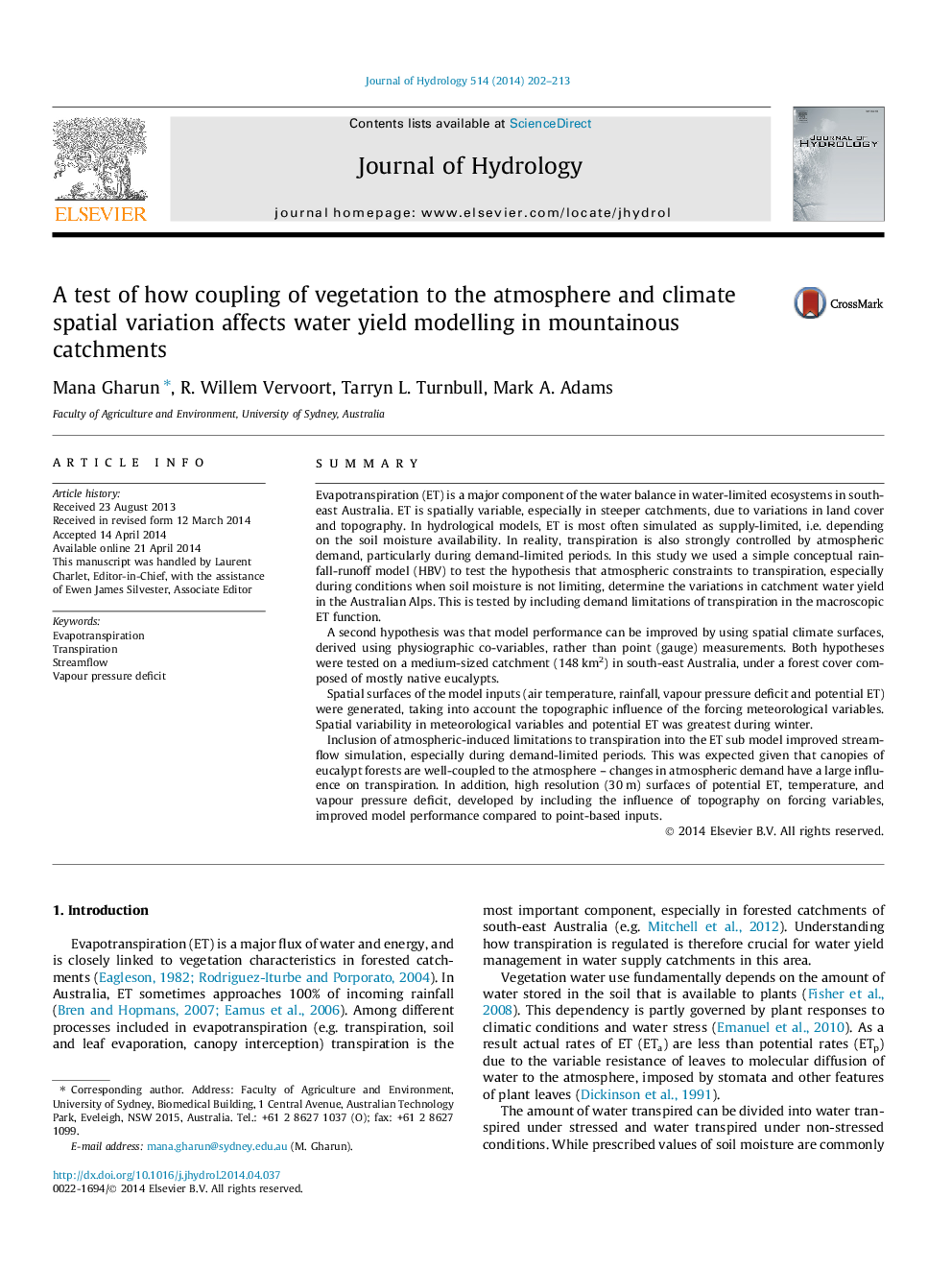| کد مقاله | کد نشریه | سال انتشار | مقاله انگلیسی | نسخه تمام متن |
|---|---|---|---|---|
| 4576015 | 1629934 | 2014 | 12 صفحه PDF | دانلود رایگان |
• We tested how forest coupling to the atmosphere affects catchment water yield.
• New ET function includes transpiration limitation during non-limited soil moisture.
• Including demand-limitation in the ET function improved model performance.
• Spatial aggregation of climate variables was superior to point-measured inputs.
SummaryEvapotranspiration (ET) is a major component of the water balance in water-limited ecosystems in south-east Australia. ET is spatially variable, especially in steeper catchments, due to variations in land cover and topography. In hydrological models, ET is most often simulated as supply-limited, i.e. depending on the soil moisture availability. In reality, transpiration is also strongly controlled by atmospheric demand, particularly during demand-limited periods. In this study we used a simple conceptual rainfall-runoff model (HBV) to test the hypothesis that atmospheric constraints to transpiration, especially during conditions when soil moisture is not limiting, determine the variations in catchment water yield in the Australian Alps. This is tested by including demand limitations of transpiration in the macroscopic ET function.A second hypothesis was that model performance can be improved by using spatial climate surfaces, derived using physiographic co-variables, rather than point (gauge) measurements. Both hypotheses were tested on a medium-sized catchment (148 km2) in south-east Australia, under a forest cover composed of mostly native eucalypts.Spatial surfaces of the model inputs (air temperature, rainfall, vapour pressure deficit and potential ET) were generated, taking into account the topographic influence of the forcing meteorological variables. Spatial variability in meteorological variables and potential ET was greatest during winter.Inclusion of atmospheric-induced limitations to transpiration into the ET sub model improved streamflow simulation, especially during demand-limited periods. This was expected given that canopies of eucalypt forests are well-coupled to the atmosphere – changes in atmospheric demand have a large influence on transpiration. In addition, high resolution (30 m) surfaces of potential ET, temperature, and vapour pressure deficit, developed by including the influence of topography on forcing variables, improved model performance compared to point-based inputs.
Journal: Journal of Hydrology - Volume 514, 6 June 2014, Pages 202–213
